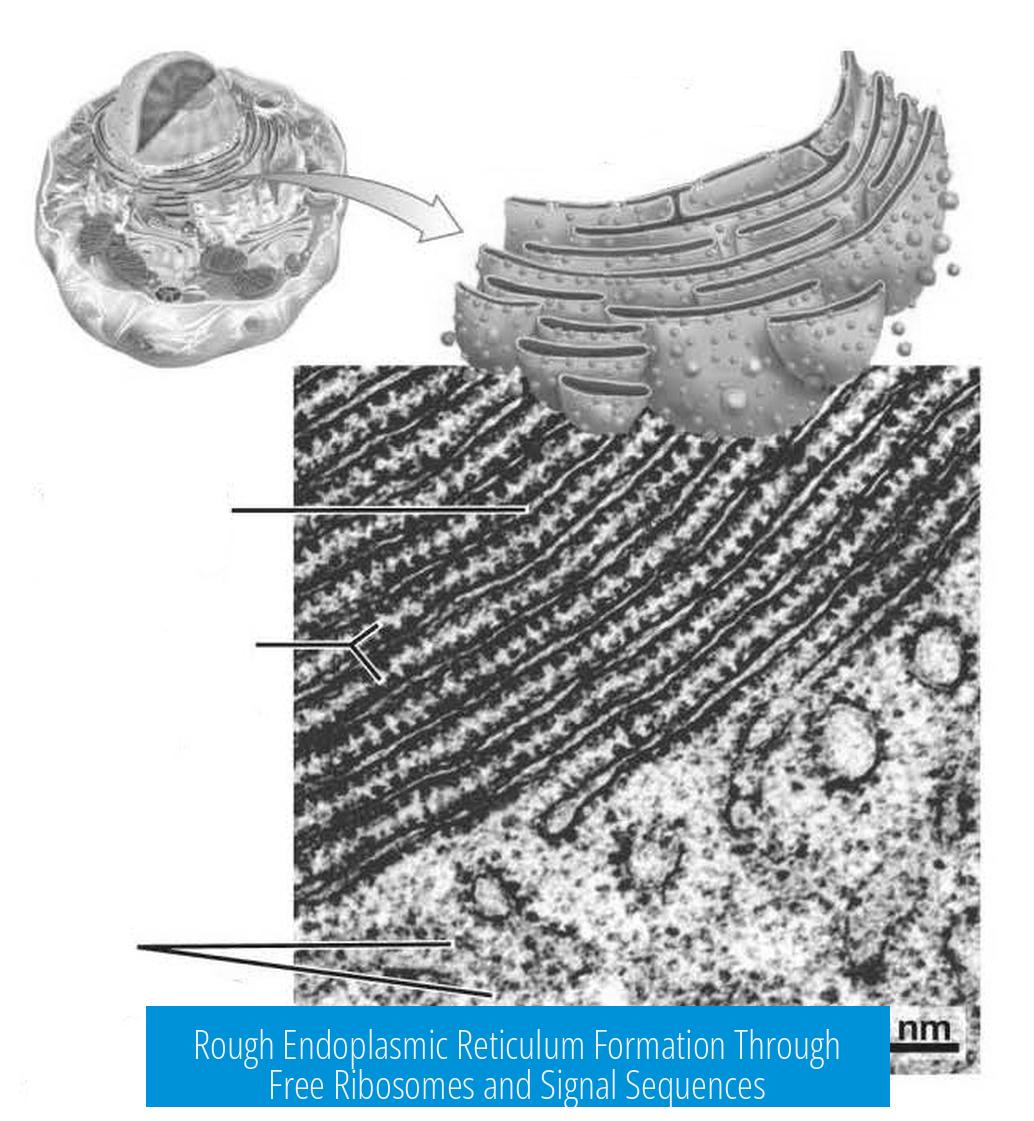Rough Part of Endoplasmic Reticulum and Free Ribosomes
The rough part of the endoplasmic reticulum (RER) forms when free ribosomes translate mRNA containing a signal sequence. As the ribosome begins translation in the cytosol, the signal sequence is recognized, causing the ribosome to bind to the ER membrane. This process converts free ribosomes into ER-bound ribosomes, creating the rough texture characteristic of the RER.
Signal Sequences Direct Ribosomes
Signal sequences are short stretches of amino acids at the N-terminus of a nascent protein. These sequences function as cellular addresses, directing ribosomes translating them toward the ER.
The signal recognition particle (SRP) recognizes and binds these sequences as they emerge from the ribosome during translation.
Role of Signal Recognition Particle (SRP)
- SRP halts translation temporarily once it binds the signal sequence.
- It then directs the ribosome-mRNA complex to the SRP receptor on the ER membrane.
- Docking at the receptor allows the ribosome to attach to the ER surface.
- Translation resumes, with the growing polypeptide threaded into the ER lumen or membrane.
Transition from Free to ER-bound Ribosomes
Initially, all ribosomes are free in the cytosol. However, those translating mRNAs with ER signal sequences transition to ER-bound status. This binding results in the “rough” aspect of the ER due to the high density of ribosomes on its surface.
This mechanism ensures that proteins destined for secretion, membrane insertion, or ER residency enter the ER early during synthesis.
Supporting Reference
The molecular details of this process are well described in the classic cell biology text by Alberts et al. This resource confirms that the rough ER’s defining feature is the ribosomes bound because of signal sequence recognition by SRP and subsequent ER targeting. It is freely accessible via NCBI (Alberts Molecular Biology of the Cell).
Key Takeaways
- Free ribosomes begin the translation of all cytosolic and ER-targeted mRNAs.
- Presence of a signal sequence in mRNA directs ribosomes to the ER via the SRP pathway.
- Binding to the ER transforms free ribosomes into ER-bound ribosomes, creating rough ER.
- This targeting route ensures proper localization of proteins for secretion or membrane integration.
What causes free ribosomes to attach to the rough endoplasmic reticulum?
Free ribosomes attach to the rough ER only when the mRNA they are translating contains a signal sequence. This sequence is recognized by the signal recognition particle (SRP), which directs the ribosome to the ER membrane.
Do all ribosomes start as free ribosomes during protein synthesis?
Yes, all ribosomes initially translate mRNA in the cytosol as free ribosomes. If the mRNA has a signal sequence, the ribosome then moves to the ER membrane and becomes ER-bound.
How does the signal recognition particle (SRP) influence ribosome location?
The SRP binds to the signal sequence on the mRNA as it emerges from the ribosome. This binding pauses translation and guides the ribosome-mRNA complex to the ER membrane, where translation resumes and the ribosome attaches.
Is the rough ER structure permanent or formed only when signal sequences are present?
The rough ER structure is formed because ribosomes bind to the ER only when translating mRNAs with signal sequences. Without these sequences, ribosomes remain free in the cytosol, and the ER appears smooth.
How is the distinction between free and ER-bound ribosomes maintained?
The mRNA’s coding determines ribosome location. If the mRNA lacks a signal sequence, the ribosome stays free. Presence of a signal sequence leads the SRP to redirect the ribosome to the ER membrane, making it ER-bound.





Leave a Comment